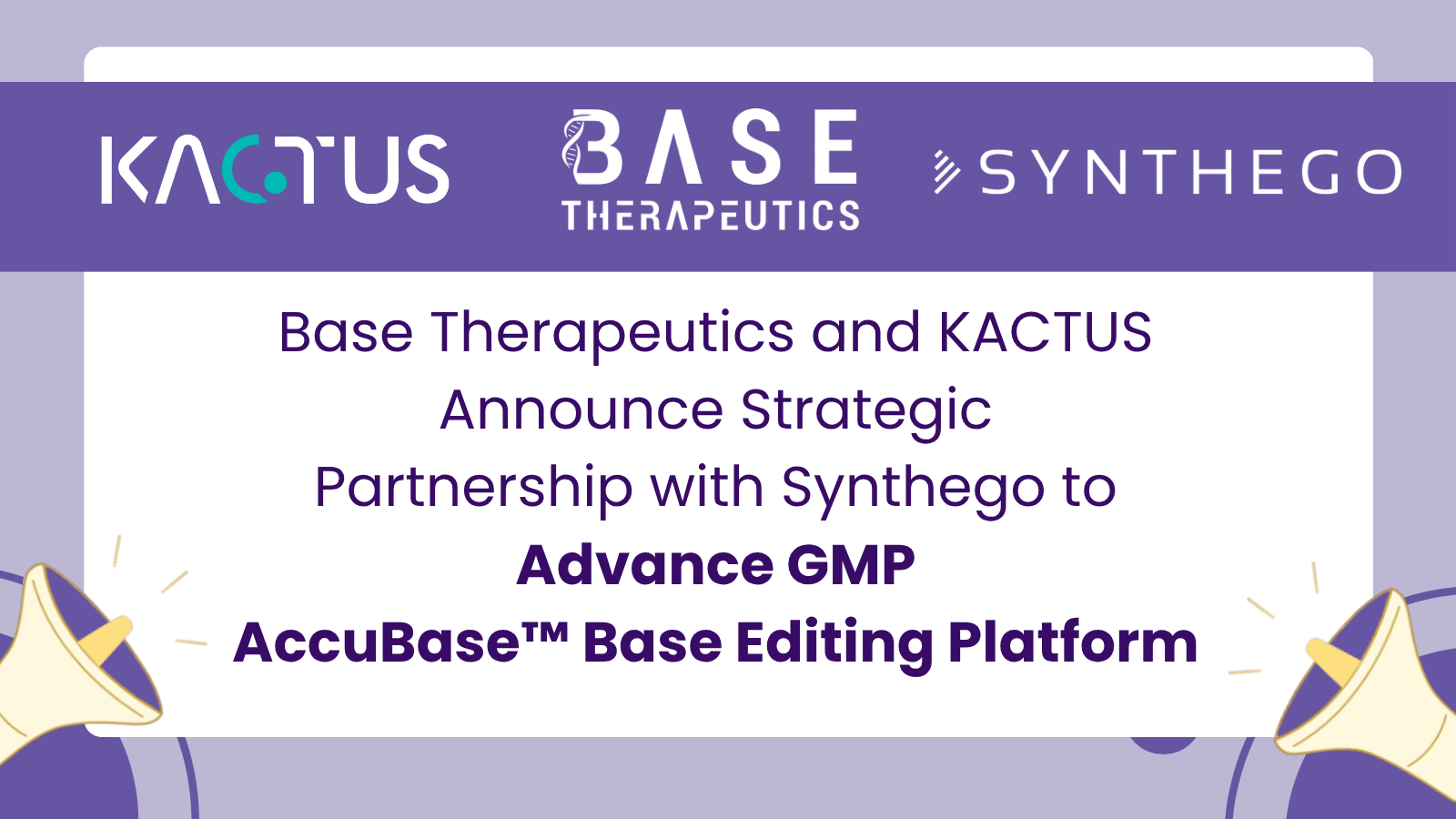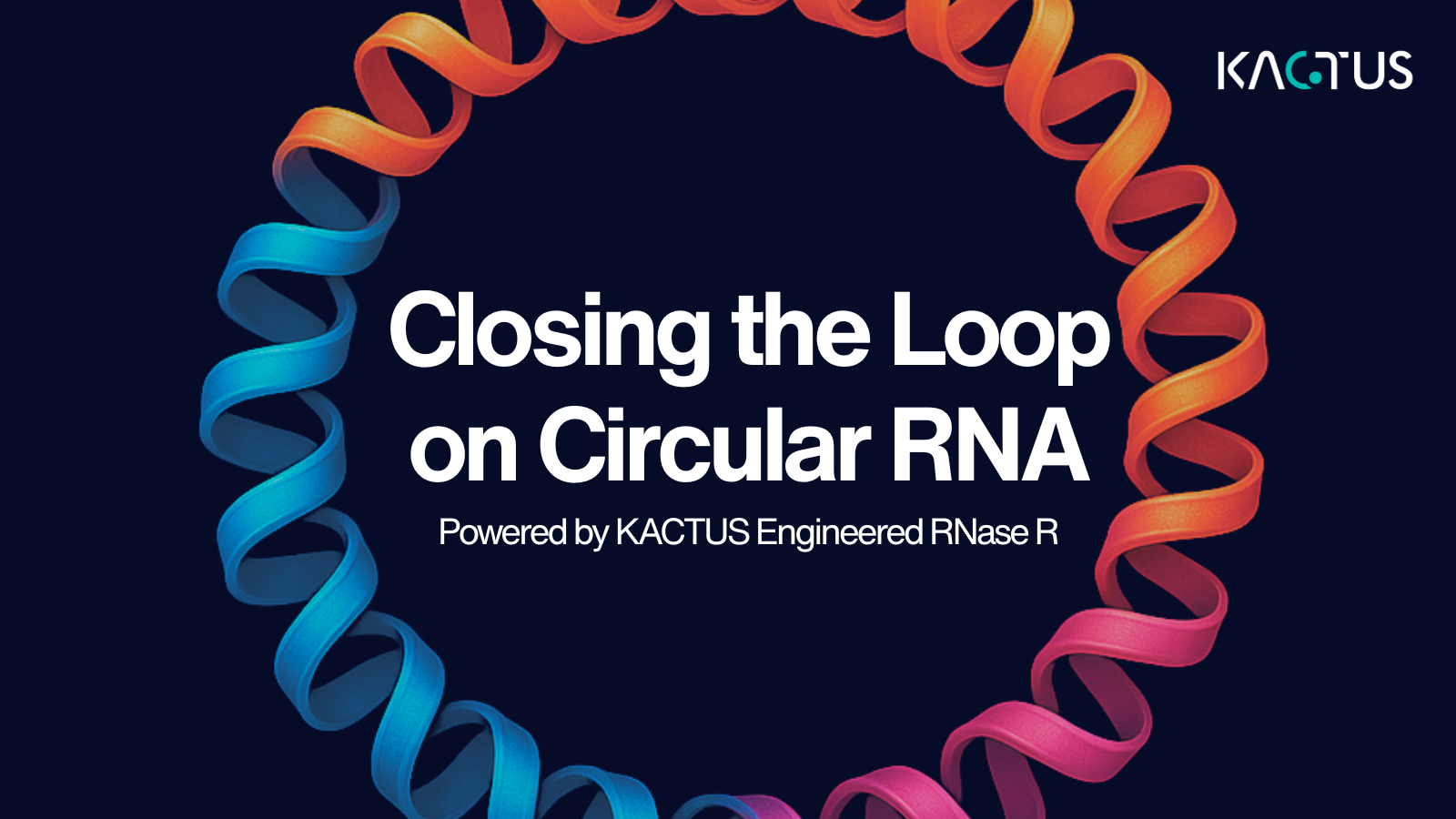Base Editing vs. CRISPR: Navigating Precision Gene Therapy
By Mallory Griffin
Gene therapy is marking new frontiers with the recent FDA approvals of innovative treatments for sickle cell disease (SCD). Casgevy is one of the first two cell-based gene therapies approved for the treatment of sickle cell disease, representing a significant breakthrough in treating disorders at the genetic level and highlighting the essential role of high-quality biomaterials such as enzymes for cell therapy in enabling these advancements.
Sickle cell disease is also being targeted through the promising technology of base editing. For example, Beam Therapeutics’ clinical-phase sickle cell disease pipeline BEAM-101, uses base edits to target activation of fetal hemoglobin production.
Amid these landmark approvals, the relevance of advanced gene editing enzymes in medical science has never been greater. Traditional CRISPR-Cas9 methods have demonstrated immense potential for precise genomic alterations. However, base editing, which modifies DNA without the associated risks of double-strand breaks, is emerging as a sophisticated alternative. Advancement in both of these technologies now prompts us to ask: When should we utilize CRISPR, and when might base editing offer a superior approach?
What Is CRISPR?
CRISPR, short for Clustered Regularly Interspaced Short Palindromic Repeats, has revolutionized gene editing since its discovery. By using the CRISPR Cas9 protein, researchers can precisely target specific DNA sequences and introduce cuts. Once the DNA is cut, the cell's natural repair mechanisms are activated, either through non-homologous end joining (NHEJ), which can introduce mutations, or through homology-directed repair (HDR), which allows precise edits if a repair template is provided.

Figure 1. CRISPR Cas9 DNA repair mechansims non-homologus end joining (NHEJ) and homology-directed repair (HDR) [1].
CRISPR Cas9 has become the go-to tool for many gene editing applications because of its high accuracy, versatility, and efficiency. Its ability to make double-stranded breaks in DNA enables the removal, insertion, or modification of genes.
However, while CRISPR Cas9 is powerful, it is not without challenges. One of the primary limitations is the possibility of off-target effects, where unintended sites in the genome are cut, leading to unpredictable consequences. Additionally, the double-strand break mechanism can trigger unwanted mutations, making the need for more precise tools even more critical.
Enter Base Editing
Base editing emerged as a next-generation gene editing tool designed to address some of the limitations of CRISPR. Instead of making double-strand breaks, base editors make precise changes to individual DNA bases—the building blocks of our genetic code. The two main types of base editors are cytosine base editors (CBEs) and adenine base editors (ABEs). These systems convert cytosine (C) to thymine (T) or adenine (A) to guanine (G), respectively, without cutting the DNA strand [2].
This technique allows for more controlled and predictable gene edits, reducing the risk of unintended consequences. Base editing is particularly valuable for correcting point mutations, which are responsible for hundreds of genetic diseases.
Key Differences Between Base Editing and CRISPR
While both CRISPR and base editing are groundbreaking tools for gene editing, they operate differently, offering distinct advantages and disadvantages:
Precision
CRISPR Cas9 introduces cuts in the DNA, which can result in a variety of outcomes, including insertions or deletions (indels) during repair. While precise edits can be made, there is always the potential for off-target effects.
Base editors make single-base changes without cutting the DNA. This reduces the risk of unwanted mutations and makes base editing more predictable. Our AccuBase™ Base Editor has been engineered to have near-zero off-target effects.

Figure 1. Measurement of off-target effects by GOTI. By leveraging the GOTI (genome-wide off-target analysis by teo-cell embryo injection) to measure the off-target effects throughout the whole genome, it was shown that compared to the control base editor (with 700 SNVs detected), the number of SNV obtained after editing by AccuBase™ is similar to the GFP (negative control) group, suggesting a near-to-zero off-target effects of AccuBase™.
Applications
CRISPR is more versatile in terms of the types of edits it can make. It can delete, insert, or replace entire sequences of DNA, making it a powerful tool for many types of gene modifications. Our GMP Cas9 protein shows high editing activity in various cells types and target genes.

Figure 2. Gene knockout in 293T (A), Jurkat (B), and T cells (C) with different batches of KACTUS GMP-grade Cas9 protein. Results show greater than 85% editing efficacy across all three cell types, comparable to a leading supplier. Gene knockouts: (A) knockout BCL11A in 293T cells; (B) knockout TRAC in Primary T cells; (C) knockout BCL11A in Jurkat cells.
Base editing is limited to converting certain bases (C to T or A to G), which is ideal for correcting specific point mutations but less suitable for large-scale genome modifications.
Safety
The double-strand breaks created by CRISPR Cas9 can occasionally lead to horizontal insertions and deletions (INDELs), during the DNA repair process Non-Homologous End Joining (NHEJ).
Base editing is inherently safer because it does not involve cutting DNA, significantly reducing the risk of unintended genetic changes. AccuBase™ Base Editor shows significantly reduced INDEL creation compared to Cas9 protein.

Figure 2. Compared with Cas9 protein, AccuBase™ does not produce DNA horizontal insertions and deletions (INDELs).
Which Tool Is Right for Your Research?
Choosing between base editing and CRISPR depends largely on the nature of the genetic change you wish to make.
As researchers continue to explore the possibilities of gene editing, base editors like AccuBase™ are likely to play a significant role in the future of gene therapy. For researchers looking to correct specific point mutations, base editors like the AccuBase™ Base Editor are ideal. They offer a safer, more precise alternative to CRISPR for these types of edits, with fewer off-target effects and no need for double-strand breaks.
On the other hand, CRISPR Cas9 continues to be indispensable for applications that require more substantial modifications to the genome. if your goal is to make larger edits, such as inserting or deleting genes, CRISPR Cas9 remains the tool of choice. The versatility of CRISPR allows for a broader range of applications, from studying gene function to developing therapies for complex genetic disorders. The GMP Cas9 protein offered by KACTUS supports these ongoing efforts, providing researchers with a reliable and efficient means to harness the full potential of CRISPR technology.
Where to Find GMP-Grade Off-the-Shelf Gene Editing Enzymes
At KACTUS, we are proud to support these efforts with our range of high-quality gene editing products, including the GMP-Grade AccuBase™ Base Editor for cytosine base editing and GMP-Grade Cas9 for CRISPR applications. As gene therapy continues to evolve, these tools will be essential for driving innovation and improving patient outcomes.
By leveraging the power of both base editors and CRISPR, we can unlock new possibilities for treating genetic diseases and advancing our understanding of the human genome.
References
[1] Castillo A. (2016). Gene editing using CRISPR-Cas9 for the treatment of lung cancer. Colombia medica (Cali, Colombia), 47(4), 178–180.
[2] Kantor, A., McClements, M. E., & MacLaren, R. E. (2020). CRISPR-Cas9 DNA Base-Editing and Prime-Editing. International journal of molecular sciences, 21(17), 6240. https://doi.org/10.3390/ijms21176240











